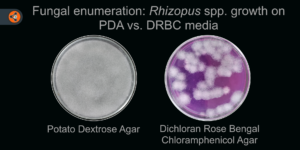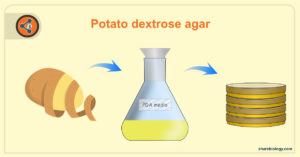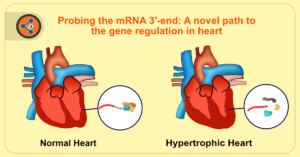Article associated: Intracellular conversations: Chloroplast-to-nucleus communication underpins slow greening in an Arabidopsis mutant.
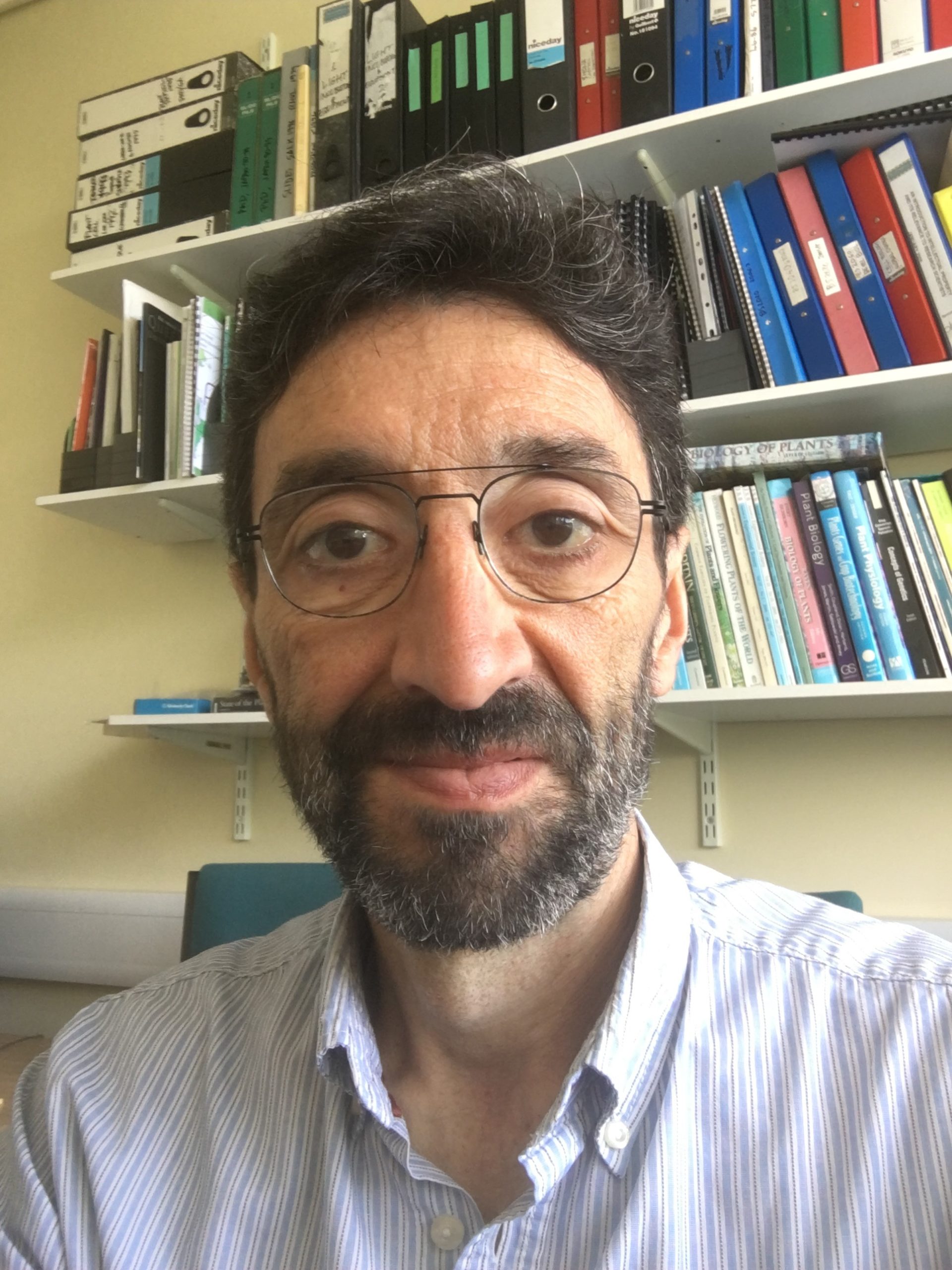 Dr.Enrique Lopez-Juez
Dr.Enrique Lopez-Juez
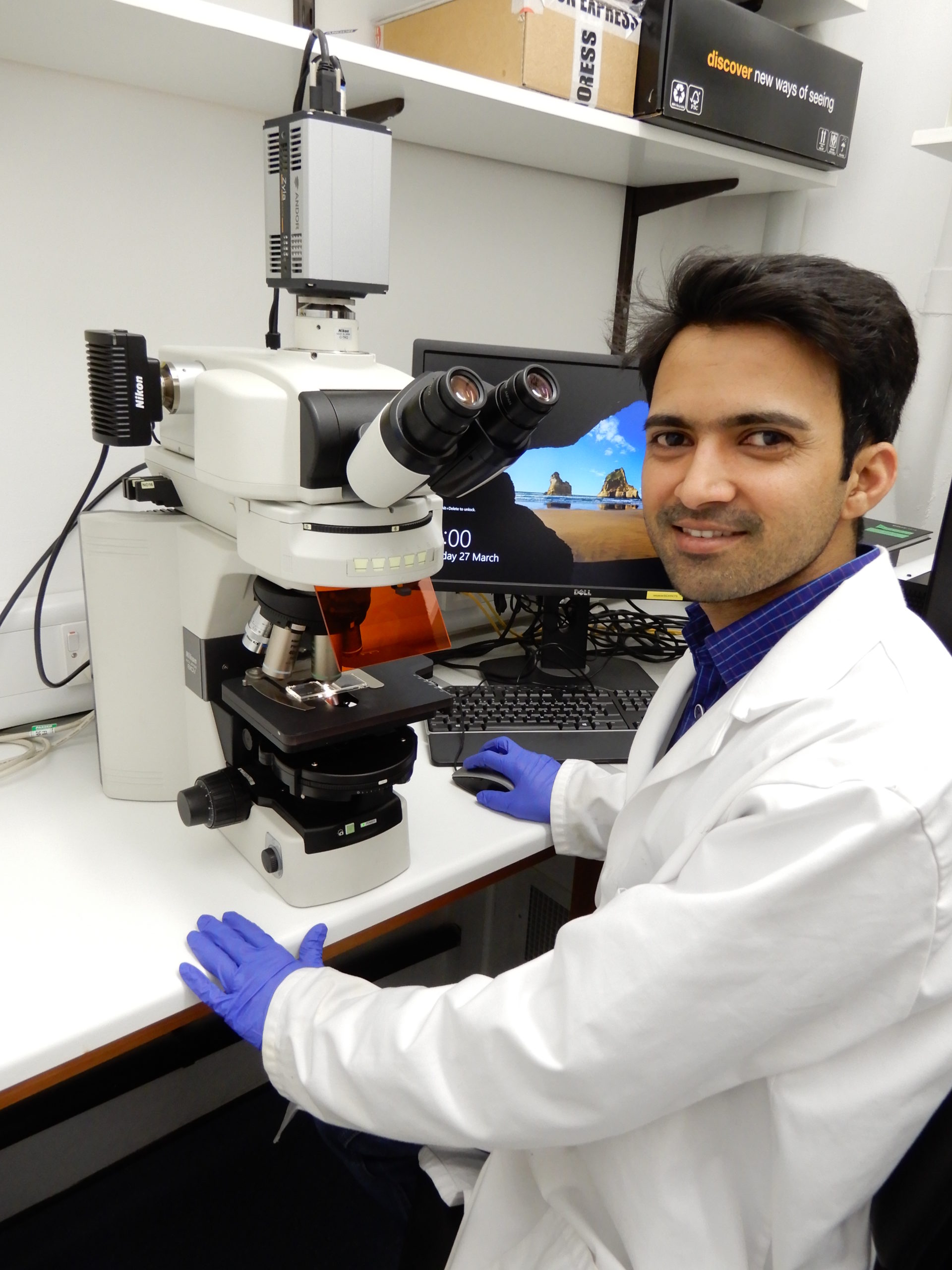 Dr. Naresh Loudya
Dr. Naresh Loudya
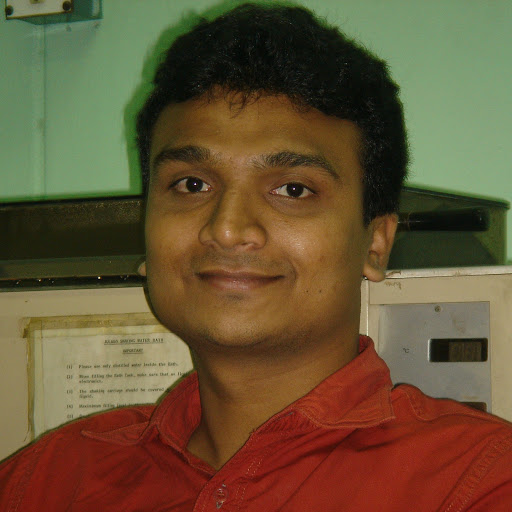 Dr. Kranthi kiran Akula
Download transcrpit
Dr. Kranthi kiran Akula
Download transcrpit
[00:00:01.900] – Kranthi Kiran Akula
Welcome to the first-ever podcast of Sharebiology. We at Sharebiology.com make science easy to comprehend and help people get updated on the new developments in scientific research. I am your host, Kranthi Kiran Akula, A graduate student from India. And today we have with us Dr Enrique Lopez Juez and Dr Naresh Loudya from the Royal Holloway University of London. Dr Lopez and Dr Naresh would be sharing details of their new and exciting findings recently published in ‘Philosophical Transactions of the Royal Society B’ and the paper is titled “Retrograde signalling in a virescent mutant triggers an anterograde delay of Chloroplast biogenesis that requires GUN1 and is essential for survival”.
[00:00:48.040] – Kranthi Kiran Akula
Dr. Lopez, thanks for joining the show. Can you give us a bird’s eye view of the article?
[00:00:53.850] – Dr. Enrique Lopez Juez
Thank you very much, Kranthi. Thank you for this opportunity. This paper falls into a subject that has intrigued plant cell biologists, and I think cell biologists more in general for quite some time, which is, how you put a cell together, how different components of the cell interact with each other. 30, 40 years ago, the first observations were published, which showed that in plants in which chloroplasts…, they are faulty, disabled for some reason, for example, they don’t have functional ribosomes, the nucleus of the cell stops expressing genes for photosynthetic proteins; proteins which are destined to the chloroplast.
So, the chloroplast is made of proteins, the majority of which are encoded in the nucleus, the nucleus determines what the chloroplast looks like. But it turns out that how the chloroplast is “feeling”, tells the nucleus what to do. People named this phenomenon retrograde signalling to distinguish it from the normal process in which the nucleus decides what the chloroplast does. That is, normally there is anterograde control, but there is also retrograde back-signalling the chloroplast talks to the nucleus. So, our paper falls in that broad area. If you want.
[00:02:17.640] – Kranthi Kiran Akula
Dr Lopez, what is the significance of retrograde signalling? In other words, why is the crosstalk between the nucleus and the chloroplast significant?
[00:02:25.660] – Dr. Enrique Lopez Juez
A common-sense answer to “why does retrograde signalling happen?” Is obviously economy. Why would the nucleus transcribe genes to make proteins in the cytosol to send to them to the chloroplast when the chloroplast is not ready to receive them? It’s an economy phenomenon. But it turns out is much more than that. We have seen that actually if the nucleus does not stop, that kills the plant, that kills the cells essentially you see.
[00:02:56.820] – Kranthi Kiran Akula
Dr Lopez, could you please tell us about the virescence mutant?
[00:03:00.310] – Dr. Enrique Lopez Juez
So, the story is the following: We isolated it in the lab in the US of a famous plant cell biologist called Joanne Cory, a plant geneticist, I should say. A called cue8, part of a family of mutants, a group of mutants which failed to respond to light-activating genes which are normally induced by light. And it was a negative-selection, reporter selection screen. The gene, that expression of which was selected against, was a photosynthetic gene, the CAB gene, now we call the LHCB gene. And these were CAB under-expressed or LHCB under-expressed (cue). And this mutant, cue8, is virescent, that means, very young leaves emerge very, almost white, very, very pale. But they green up gradually, and the mutants CAB under-expressed, it means it expresses photosynthetic genes very poorly. Other light-induced genes are expressed normally. So, it has a problem expressing photosynthetic genes. And it turns out this is because of this retrograde signalling.
[00:04:17.450] – Kranthi Kiran Akula
Dr. Lopez, can you elaborate on the cue8 mutant phenotype?
[00:04:22.600] – Dr. Enrique Lopez Juez
The mutant has a basic defect in chloroplast development, in early plastid development, and therefore the nucleus stops sending proteins to the chloroplasts. Now, what we have found in this paper is that that slow greening virescent phenotype, slow making chloroplast phenotype is actually the result of not just retrograde signalling shutting down photosynthetic gene expression, but actually a maintenance of a sort of juvenile chloroplast state. So, although genes for photosynthetic proteins are not very actively sent, the chloroplast itself makes some proteins, a few of its own proteins, some are photosynthetic, some are housekeeping. The photosynthetic proteins, the chloroplast also makes very slowly. But the housekeeping proteins it’s making, it’s producing very fast. The expression of housekeeping chloroplast genes is very active. And we know, through work of other people and through work in our lab, in a developing cereal leaf that this is what happens in very young chloroplasts that non photosynthetic proteins, housekeeping proteins, are very actively expressed. Young chloroplasts also accumulate their chloroplast genomes very rapidly. We found that these chloroplasts of cue8, although they were small juvenile, they were packed full of chloroplast genomes, packed full of DNA. And we thought, is this juvenile state very active expression of chloroplast housekeeping genes, very reduced expression of Chloroplast photosynthetic genes, very active chloroplast DNA replication, which accumulates normal wildtype chloroplast DNA even more even beyond the wildtype.
[00:06:18.850] – Kranthi Kiran Akula
Dr. Naresh, can you explain how the chloroplasts get affected in the virescence phenotype of the cue8 mutant?
[00:06:26.480] – Dr. Naresh Loudya
The slow greening phenotype of cue8 is really interesting. We used microscopy to understand how cells and their chloroplasts are developing in different developmental stages. So, what we found was that the very young mesophyll cells of pale seedlings were less filled with chloroplasts compared to the mature greener leaves. The chloroplast number was not reduced, but it was the size of the individual chloroplasts that increased gradually, unlike what we see in wildtype cells. And this explains the virescence phenotype.
[00:07:03.720] – Kranthi Kiran Akula
Dr. Lopez, the paper talks about the role of retrograde signalling in cue8 and the nucleus, attempting some correction. How does the signal movement unfold? Can you explain the signalling pathway in more detail?
[00:07:17.270] – Dr. Enrique Lopez Juez
Our knowledge of chloroplast to nucleus communication is limited. We know some things. There’s one very intriguing protein also identified by genetic means called GUN1. In a gun1 mutant, this chloroplast to nucleus communication does not seem to happen normally. Even when chloroplasts are disabled, the nucleus continues to express photosynthetic genes. So, we said, what would happen if we put a cue8 mutation together with a gun1 mutation, if we disable the chloroplasts, but also disable this chloroplast to nucleus communication. And the answer was we couldn’t get those plants; until we found that in double-mutants, after having done cross in the population, in which we were expecting to find the double mutant, in that population some seedlings were becoming completely bleached and dying. The loss of chloroplast development in cue8, put together with a loss of chloroplast to nucleus signalling, kills the plant. So, this chloroplast to nucleus communication, this retrograde signalling is not just about economy; It’s actually fundamental for survival.
One key question we asked was: this change in chloroplast behaviour, this maintenance of juvenile behaviour, how does it happen? And the answer was, the nucleus encodes the early chloroplast polymerase, the one that transcribes housekeeping genes, the ones which are being more active. And the nucleus was indeed boosting the expression of that polymerase. So, a juvenile, hyperactive housekeeping chloroplast behaviour was actually the result of the nucleus telling the chloroplast “express more housekeeping genes”. So, it turns out there’s a chloroplast problem, the chloroplast talks to the nucleus and says, “I’ve got a problem”. It seems to be somehow using this GUN1 protein, at least in part because without it, these conversations don’t happen and the plant dies, but the chloroplast talks to the nucleus and the nucleus says, “Okay, hold on, Please carry on expressing housekeeping genes, take it easy, don’t express photosynthetic proteins yet, see how things go”; and then the chloroplast does that, it boosts housekeeping genes, it replicates the chloroplast genome; slowly, slowly, gradually, it becomes ready to accept the photosynthetic proteins and eventually it relatively greens, relatively normally.
So, there’s a chloroplast to nucleus retrograde communication, followed by a nucleus to chloroplast, if you want, anterograde correction., So, this conversation doesn’t just happen two ways: nucleus to chloroplast, chloroplast to nucleus, it happens actually in this case, three ways, nucleus – to – chloroplast, chloroplast – to – nucleus and back nucleus – to – chloroplast, a retro-anterograde correction. This cellular conversation is fundamental to allow survival of a chloroplast problem. This is the summary of the paper.
[00:10:41.100] – Kranthi Kiran Akula
Dr. Lopez, you were mentioning about the role of GUN1 protein. How does GUN1 regulates the signalling between the nucleus and chloroplast?. As a protein is GUN1 a transcription factor, or is it just a signalling molecule?
[00:10:54.860] – Dr. Enrique Lopez Juez
Well, the very short answer is we don’t really know.
[00:10:57.890] – Kranthi Kiran Akula
OK.
[00:10:59.140] – Dr. Enrique Lopez Juez
What we do know, we have evidence that – we were very fortunate in the lab, of actually finding some of the first evidence for this, that a family of molecules, of metabolites, they’re not primary, but you could say primary metabolites plays.. seems to play a role in signalling between the chloroplast and the nucleus. These are tetrapyrroles, the family of molecules that includes chlorophyll and haem. They are precursors. If you feed the precursor of tetrapyrroles – we found this years ago – so if you feed precursor the tetrapyrroles to plants, you can shut down photosynthetic gene expression. And the Chory lab itself identified not just gun1, but a series of gun mutants as part of the screen, mutants in which chloroplast the nucleus communication did not work normally. And several of them, in fact all of them but gun1, encode tetrapyrrole metabolism proteins, tetrapyrrole synthesis proteins. So, we know they play a role.
But how do they play that role? Do tetrapyrroles leave the chloroplast and reach the nucleus? Or do they signal in some secondary way? Does something else come out of the chloroplast? The simple answer is we don’t know. And the only GUN protein that is not a tetrapyrrole metabolism protein is GUN1. It’s a.. It’s called a tetratrichopeptide repeat-containing protein. It interacts with… Not with DNA, but with chloroplast nucleoids, the complex of DNA and proteins that contains DNA in the chloroplast; it interacts with chloroplast ribosomes; it interacts with chloroplast protein import proteins. And some recent evidence says it interacts with some enzymes in tetrapyrrole metabolism. So, we don’t know whether it plays a generic monitoring role in chloroplast processes, and we don’t then know how, whatever it does, the way it has monitored something going on in the chloroplast, how that information gets out of the chloroplast. So, we know some things, but we don’t yet know the crux of the matter.
[00:13:19.820] – Kranthi Kiran Akula
Yeah, so a lot more is yet to be known.
[00:13:22.830] – Dr. Enrique Lopez Juez
A lot more is to be known, absolutely. Absolutely.
[00:13:25.890] – Kranthi Kiran Akula
Well, that’s great that you’re trying to decipher it piece by piece sir and trying to build up the story. Absolutely great Sir. About this cue8 mutant, like you said, that this is actually the one that causes stress in the plastids in the sense that it will help maintain the plastids in the juvenile state. So how is it that the NEPs, or the nuclear-encoded polymerases, transcribe the housekeeping genes? What is a direct correlation between the cue8 and the actual signalling that’s happening?
[00:13:58.420] – Dr. Enrique Lopez Juez
Yeah. So again, we know part of the answer. Basically, the chloroplast has its own genome like mitochondria. The chloroplast has two RNA polymerases – mitochondria have one the chloroplast has two – and in fact, one is probably, most probably, the ancestral one, the one that it had when it was a cyanobacterium. The other one is one that it hijacked from mitochondria.
[00:14:29.540] – Kranthi Kiran Akula
Oh, that’s interesting!.
[00:14:31.080] – Dr. Enrique Lopez Juez
So, it’s very similar to the mitochondrial RNA polymerase. But now in the nucleus of some plants, there are two genes for this RNA polymerase. It’s a bacteriophage – type so – one – that, originally, was also inherited from Bacteria probably, bacteriophage – type, T7 – type RNA polymerase – they have two, one targeted to mitochondria and one targeted to chloroplasts; and some plants like ours, Arabidopsis, in fact, have three genes, one targeted to mitochondria, one targeted to chloroplasts and one targeted to both organelles. So that’s how similar they are. Anyhow, the two RNA Polymerases, they seem to have different functions. They do overlap a lot, so, most genes can be transcribed by both; but the nucleus phage-type, mitochondrial – type RNA polymerase, that is encoded in the nucleus, and that preferentially transcribes housekeeping genes. What are housekeeping genes? Things like genes for ribosomal proteins. Funnily enough, genes for the subunits of the other, the chloroplast – encoded RNA polymerase, the one which was originally Cyanobacterial. And the other RNA polymerase in chloroplasts, is multi-subunit, its subunits are encoded in the chloroplast itself to get transcribed by the nucleus, encoded polymerases. All, but their regulatory subunits. There’s a subunit call Sigma factor, and those are encoded in the nucleus. So, the nucleus encodes the nucleus-encoded polymerase [NEPs], the bacteriophage – type, mitochondrial – type, and it encodes the regulators of the chloroplast encoded RNA polymerase. The chloroplast encoded RNA Polymerase transcribes the photosynthetic genes.
[00:16:27.990] – Kranthi Kiran Akula
Dr. Lopez, how does the cue8 defect bring changes in the nuclear gene expression?
[00:16:34.250] – Dr. Enrique Lopez Juez
So, what the mutation in cue8 does is it boosts the expression of the nucleus-encoded RNA polymerase, but it reduces the expression of the sigma factors for the chloroplast encoded polymerase. And so in that way, it boosts housekeeping gene expression, but it reduces photosynthetic gene expression. And it also seems to somehow push, not a huge amount but significantly, measurably, push also the DNA polymerase that replicates the genomes of the chloroplast, the organelle targeted DNA polymerase. So, by boosting the template and both the template and the RNA polymerase, it manages to boost the housekeeping gene expression. That’s how it does.
[00:17:26.260] – Kranthi Kiran Akula
Dr Naresh, how does the cue8 mutant compare to other mutants that have been studied earlier?
[00:17:33.650] – Dr. Naresh Loudya
As Dr. Lopez mentioned, in spite of their underdeveloped stage, the cue8 chloroplasts show enhanced housekeeping gene expression and maintenance of DNA replication. So, we wanted to know whether this phenotype is due to the result of a photosynthesis defect or a housekeeping defect. Work from other labs has shown that import of cytosolic proteins into the chloroplasts happens through two different routes. One is preferentially for the import of housekeeping proteins, and the other route is for the import of photosynthesis-related proteins. Now we selected mutants that have either housekeeping defect or photosynthesis defect. Interestingly, both the genotypes showed this compensatory mechanism, what we observe in cue8, but the one with housekeeping defect behaved more like cue8.
[00:18:38.720] – Kranthi Kiran Akula
Dr. Lopez, the paper shows RNA editing changes. Is this also the part of the correction that’s happening in the cue8 mutant?
[00:18:46.580] – Dr. Enrique Lopez Juez
We do not know whether this also has something to do with the correction or is part of the original signalling. But actually Naresh, found through the work on the cue8 mutant, that there is something funny going on not just with the expression of genes, not just with the number of copies of the genome, but also with a phenomenon called RNA editing. Chloroplasts express genes produce mRNA, but sometimes single bases of those mRNAs are corrected.
[00:19:20.840] – Kranthi Kiran Akula
Dr. Naresh, what is the relevance of RNA editing in this study?
[00:19:27.260] – Dr. Naresh Loudya
Yes, so chloroplasts RNA editing is a common phenomenon that substitutes cytosine to uracil bases in various mRNAs. Studies on other genetic mutants, or let’s say plastid damage caused by herbicide, have shown to alter this mRNA editing of selected genes. And recently, GUN1 was reported to play a role in this mechanism, particularly in the seedlings treated with herbicide. Now, we asked whether the mRNA editing is affected in the cue8, gun1 albino double-mutants. For that, we selected mRNAs of two chloroplast encoded genes, a housekeeping and a photosynthesis-related one. It appears that their editing efficiency is altered just by the loss of cue8 in the single mutant. If at all, the changes were more pronounced in the double-mutant cue8 gun1. So, this suggested GUN1 was not required for these changes.
[00:20:34.220] – Kranthi Kiran Akula
Dr. Lopez, let us conclude this podcast with a few lines from you. Would you like to say or share anything that is not in the paper?
[00:20:42.790] – Dr. Enrique Lopez Juez
If I could say one thing, this paper, like so many, you know that is what we call “social sciences”, yeah? I would say so. We are experimental scientists. We are not social scientists. But in a way, all science is social. We are contributing a little, small few bricks to this building, which is developing an image of how a cell is put together; the issue of chloroplasts to nucleus communication is really intriguing, it has fascinated a number of labs in the world. I was very fortunate to be a postdoc, years ago, at a fantastic lab doing… in which I learned to do Arabidopsis genetics; work continues in different labs around the world, there are several well-known in Britain, in Germany, in the US, in Japan, others, in China. Another way science is social is, it has been a real privilege to host an extremely talented young scientist, Naresh in our lab, in the last few years. And the paper, and others that will be coming, are the result of a constant bouncing of ideas, and mutual “stimulus” if you want. So, this is the way science works. All sciences is social, we work together and is a fantastic thing to do. It is an incredibly satisfying human endeavour.
[00:22:05.100] – Kranthi Kiran Akula
As Dr. Lopez said, science and society should always go hand in hand. Excellent thought Sir, it has been a pleasure to have you on the show. Dr. Lopez and Dr. Naresh. I thank Dr. Rama Devi for her help in conducting this podcast. Well, listeners, that’s the end of the podcast. And if you like our work, please subscribe to Sharebiology.com for more podcasts in the future.

